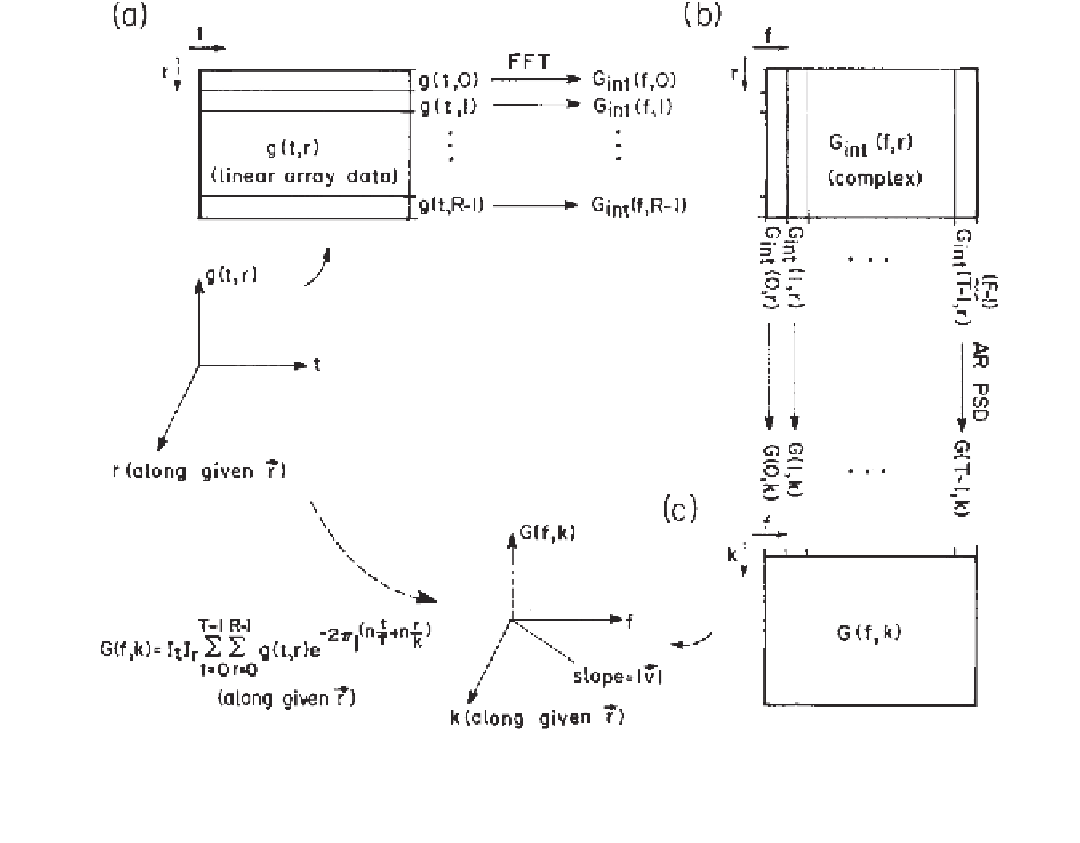Biomedical Engineering Reference
In-Depth Information
Figure 5.21
A hybrid two-dimensional spectral estimator: Spatiotemporal data (
a
) are transformed along the time domain into an inter-
mediate array (
b
) through the application of a windowed FFT to every row of the original data. Applying an AR PSD estimator to every col-
umn of the intermediate array completes the two-dimensional PSD estimation process (c). [Reprinted from
Med. Eng. Phys.
, 17, D. Prutchi,
A High-Resolution Large Array (HRLA) Surface EMG System, pages 442-454, 1995, with permission from Elsevier.]
an intermediate transform
G
int
(
f, r
) is computed by applying the FFT along each row (time
domain) of appropriately weighted data. The two-dimensional spectral estimate
G
(
f, k
) is
then completed by obtaining the AR-PSD of each column of complex numbers in the inter-
mediate transform. In the more general case, using an array of sensors spread out over an
area, and with a plane wave traveling in any direction under the array, a three-dimensional
hybrid spectral estimator can determine not only the wave's components and their veloci-
ties but also each component's bearing.
A practical example of the use of this method is the analysis of biopotentials that can
be picked up from skeletal muscle
fibers using electrodes attached to the skin [Prutchi,
1994, 1995]. These biopotentials are caused by the sum of currents from action potentials
that travel down individual muscle
fi
fibers responsible for the contraction of muscles. The
conduction velocity, as well as the origin of these potentials, contains a wealth of infor-
mation that can be used, for example, as an aid in the early diagnosis of nerve and muscle
diseases. The large number of convoluted signals and the very small di
fi
erences between
their waveforms make it impossible to determine this information from spatiotemporal
data (Figure 5.22
b
) recorded di
ff
ff
erentially using 32 surface electrodes placed 2.54 mm



Search WWH ::

Custom Search